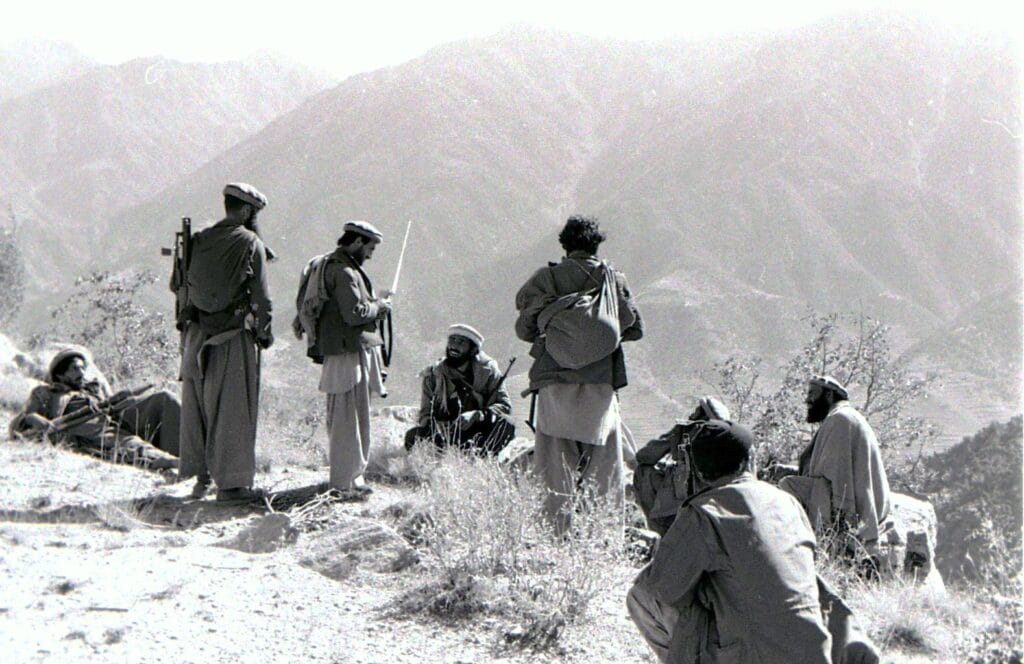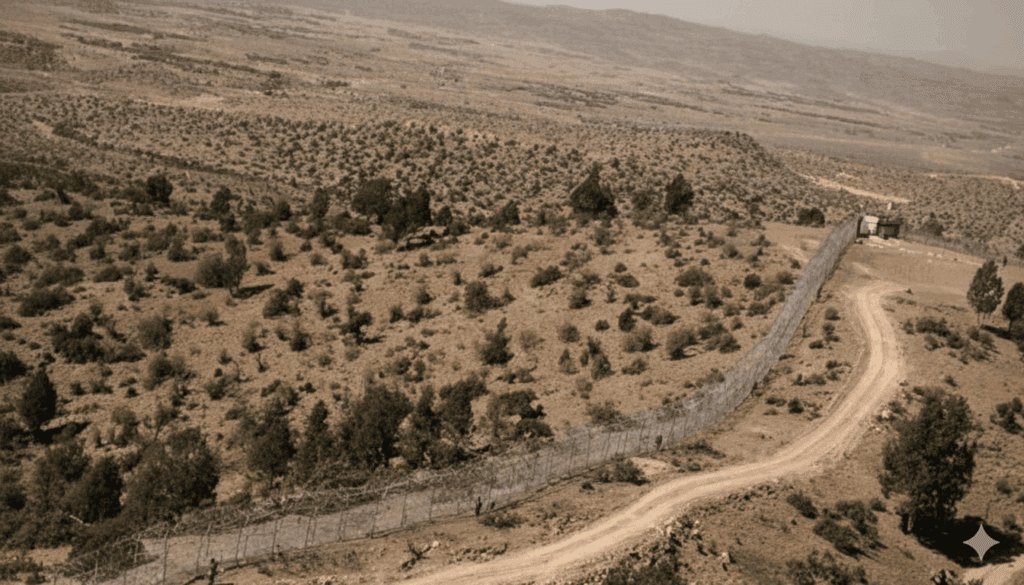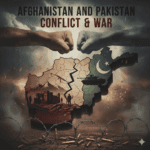The geopolitical map of South Asia appears to be placed on a powder keg these days, with Afghanistan and Pakistan as its two main characters. For India, this Western front has become a complex and unstable triangle—whose corners are New Delhi, Islamabad, and Kabul. India’s ‘South Asian Strategy’ in this region has a core mantra: achieving development and regional stability while keeping national security paramount.
This challenge became even more serious when the Taliban took control of the government in Afghanistan in August 2021. However, this time the Taliban government (Islamic Emirate of Afghanistan) has tried to distinguish itself from the old government of 1996 to 2001. But the realities on the ground tell a different story.
The explosions that occurred in Kabul and Paktika (Afghanistan) on October 9, and the subsequent air strikes by Pakistan in response to the retaliatory actions taken by the Taliban on Pakistani targets on October 11–12, clearly demonstrated that the traditional equation between the Taliban and Pakistan, which had been continuously breaking down since 2021, has now been finalized.
Visit of Foreign Minister of Afghanistan to India.
The recent visit of the Foreign Minister of Taliban-controlled Afghanistan, Amir Khan Muttaqi, has brought India and Afghanistan closer, which Pakistan considers a ‘warning bell’ for itself.
Should Muttaqi’s arrival in India on October 9 and the bomb blast in Kabul late that same night be considered merely a coincidence or a warning to Afghanistan? And then, Muttaqi’s subtle reprimand of Pakistan during his press conference from Indian soil—all this speaks volumes.

Muttaqi’s promise that Afghan soil will never be used for terrorism against India creates both a strategic opportunity and a security risk for India.
This unstable ‘Tri-Junction’ compels India to tread very cautiously at every step. The rise of the Taliban, Pakistan’s internal instability, and the deepening crisis on the Durand Line—all these factors collectively and directly affect India’s security.
This is not just a story of diplomatic maneuvering but a decisive turning point for India’s long-term security and the future of South Asia.
Taliban’s return to Afghanistan and India’s security concerns
In August 2021, amid the hasty withdrawal of American and NATO troops, the Taliban re-emerged in power by capturing Kabul. Afghanistan is the second crucial pole of India’s strategy in South Asia.
Compared to the previous Taliban government from 1996 to 2001, which was only recognized by three countries (Pakistan, Saudi Arabia, and the UAE), this new government (Islamic Emirate of Afghanistan) is attempting to portray itself as more diplomatic and pragmatic.
Rebellion against the Soviet-backed People’s Democratic Party government
There was a time when, after the Saur Revolution in 1978, a Soviet-backed government of the People’s Democratic Party of Afghanistan (PDPA) was established in Afghanistan, which initiated socialist reform programs like land reform, women’s education, and changes to religious traditions. These policies were viewed by rural and religious segments as interference in Islamic customs.
Gradually, discontent spread throughout the country, and this rebellion took the form of the Mujahideen movement, which later led to the Soviet-Afghan War (1979–1989).
The rebellious Mujahideen, including the former Taliban and similar organizations, received support from Pakistan for fighting first the government and later the Soviet Union—a policy Islamabad referred to as ‘Strategic Depth’.
However, for India, this historical connection and the recent Taliban return have created serious security concerns. New Delhi’s primary worry was that the soil of Afghanistan should not once again become a ‘safe haven’ for anti-India terrorist groups.
Organizations like Jaish-e-Mohammed (JeM) and Lashkar-e-Taiba (LeT), which had Pakistan’s tacit support, could grow stronger under the new Taliban government and escalate their activities.
This would not only promote cross-border terrorism but also threaten regional stability. When the Taliban took power in Afghanistan on August 15, 2021, India’s very first strategic step was to shield its security from this contagion of instability. Therefore, for security reasons, India recalled all its diplomats and embassy staff from Kabul and temporarily suspended diplomatic activities there.
India’s relations with the Ashraf Ghani-led Afghan government
Before the new Islamic Emirate government of Afghanistan, India had an extremely close relationship with the former republican government of Afghanistan under the Ashraf Ghani regime. India completed several significant projects there:
- Salma Dam (Afghan-India Friendship Dam): Located in Herat province, it is considered a symbol of India-Afghan friendship.
- Afghan Parliament Building (Kabul): Constructed by India at a cost of approximately $90 million.
- Zaranj–Delaram Highway: Which strategically strengthens India’s access to Iran’s Chabahar Port.
- Education, Health, and Training Projects: Which directly benefited Afghan citizens.
These projects were not only symbols of India-Afghan friendship but also examples of India’s soft power and development-centric diplomacy in South Asia.
All these efforts not only reflect India’s Developmental Diplomacy but also show that India prioritized humanitarian and structural cooperation over military aid in Afghanistan.
India’s new strategy and diplomatic approach with the Taliban
Following the return of the Taliban regime, India initially adopted a “wait and watch” policy. India did not grant the Taliban government official recognition, but understanding that the stability of Afghanistan is essential for India’s regional security, it gradually began establishing limited and practical contact.
Suggestions from leaders and India’s thinking – Advocating engagement with the Taliban
Even before the Taliban came to power, some Indian politicians and political watchers had advocated for opening dialogue and establishing contact with the Taliban in view of this regional reality.
For instance, Member of Parliament Asaduddin Owaisi had signaled in Parliament that channels for dialogue should be kept open with a power like the Taliban, which he later reiterated on several occasions.
Why some leaders advocated for dialogue
The argument made by Indian leaders has been that, “completely ignoring any political structure in Afghanistan could negatively affect India’s regional security interests and development projects; therefore, limited and cautious contact is strategically wise to maintain practical interests (humanitarian aid), ensure the safety of projects, and continue regional stability.”
Indication of policy change in the later period
Even after the Taliban established de facto control, India adopted a policy of ‘cautious engagement’ before granting full recognition—dialogue was maintained through humanitarian aid and a technical mission, and the possibility of high-level talks was also explored.
The media and analysts have described this as a pragmatic move, allowing India to maintain regional influence while safeguarding its development interests and security concerns.
India’s policy: ‘Pragmatic policy of engagement’
Following the return of the Taliban, India has adopted a balanced and pragmatic approach. This policy was based on the principle of “engagement but not recognition.” On one hand, India has not officially recognized the Taliban regime, but on the other, keeping its national and security interests in mind, it has maintained limited contact through a technical mission in Kabul.
This diplomatic stance allows India to stand with the people of Afghanistan while maintaining distance from the Taliban’s ideological fundamentalism. Humanitarian assistance is at the center of this strategy. India has continued to provide large-scale aid to the Afghan public.
Humanitarian assistance and relief operations
India has upheld its commitment to the Afghan people and has dispatched humanitarian aid, including:
- 50,000 tonnes of wheat,
- Medicines and COVID vaccines,
- And other relief materials on a humanitarian basis.
This aid was distributed through UN agencies and the World Health Organization (WHO), rather than being handed over directly to the Taliban regime.
Re-establishment of the Indian Technical Mission in Kabul (2022)
In 2022, India deployed a “Technical Team” to Kabul, with the objectives of:
- Monitoring Indian projects,
- Coordinating aid distribution,
- And maintaining minimal dialogue with the local administration.
This step was considered a symbol of India’s “Engage but don’t endorse” policy.
strategic approach
India knows that completely severing dialogue with the Taliban could make Pakistan and China more influential in Afghanistan. Therefore, India is now adopting a “Balanced Engagement Policy”—where limited dialogue is maintained with the Taliban, while focusing on the Afghan populace and regional stability.
Pakistan: The Security Challenge and India’s Dual Strategy
The first significant pole of India’s strategy in South Asia is Pakistan. The changing situation in Afghanistan has given a new dimension to India’s complex security equations with Pakistan. India adopts a Dual Strategy here—maintaining zero tolerance on security while looking for opportunities to leverage regional instability.
Pakistan-Taliban equation: Implications for India
Historical Relations: The Illusion of ‘Strategic Depth’
For decades, Pakistan’s foreign and security policy has been centered on maintaining ‘Strategic Depth’ in Afghanistan. This meant establishing a friendly government in Kabul that could be used as a safe strategic area against India. Under this policy, Pakistan’s intelligence agency (ISI) long supported and nurtured the Taliban. Pakistan had hoped that after the return in 2021, the Taliban would remain its loyal ally.
Current tensions: The Durand Line and the TTP crisis
However, this hope was soon shattered. Since the Taliban’s return, a sharp dispute has erupted between the two over the Durand Line (the Afghanistan-Pakistan border). The biggest tension revolves around the Tehrik-i-Taliban Pakistan (TTP), also known as the ‘Pakistani Taliban’. Kabul is refusing to take action against the TTP, leading to increased cross-border attacks in Pakistan. The recent actions taken by Afghanistan against Pakistan on the border following the explosions in Kabul and Paktika, and the retaliatory air strikes by Pakistan, are evidence of this growing breakdown of trust and tension.
Opportunities/Challenges for India
The internal instability in Pakistan and its deteriorating relationship with the Taliban are a double-edged sword for India. The challenge is that the increasing terrorism and instability in Pakistan could have a direct or indirect impact on India’s border security. Conversely, the opportunity lies in the fact that Pakistan is being challenged by its own formerly sheltered terrorist groups, which has increased pressure on its western border and reduced its focus on hostility with India. India can utilize this rift to gain an advantage in regional diplomacy.
India’s Pakistan-centric strategy
Diplomatic pressure
India has suspended bilateral talks with Pakistan until it ends cross-border terrorism. Concurrently, India has utilized international forums to oppose terrorism nurtured by Pakistan. On global platforms like the United Nations (UN) and the Financial Action Task Force (FATF), India maintains diplomatic pressure on Pakistan regarding cross-border terrorism and the Kashmir issue. The objective is to encourage the global community to view Pakistan as a ‘state sponsor of terrorism.’
Border Management
In line with its zero-tolerance policy on terrorism, India has placed maximum emphasis on border management. Strengthening border security, increasing surveillance to prevent infiltration, and taking deterrent action against terrorist infrastructures are core parts of this strategy. India’s military and intelligence readiness ensures that adversaries cannot take advantage of the unstable regional environment.
Treaty and cooperation limits
Even though tensions exist between the two countries, some historical agreements remain in place. India maintains vigilance over agreements like the Indus Water Treaty and ensures it is not used as a strategic weapon. However, after a terrorist attack occurred in Pahalgam, Jammu and Kashmir, India in April 2025, a decision was taken to put this treaty “in abeyance.”

However, the possibilities for cooperation in trade and other sectors are virtually exhausted, as India has made it clear that terrorism and dialogue cannot go hand-in-hand. India’s strategy is to maintain caution even in limited areas of cooperation, while tying large-scale bilateral relations to security concerns.
India’s Security Strategy Through the Taliban and Pakistan
Balance of power in South Asia
The geopolitical landscape of South Asia has long been influenced by the complex equations between India, Pakistan, and Afghanistan. After the Taliban’s return to power in Afghanistan, Pakistan viewed it as its “Strategic Depth,” presenting an opportunity to limit India’s influence.
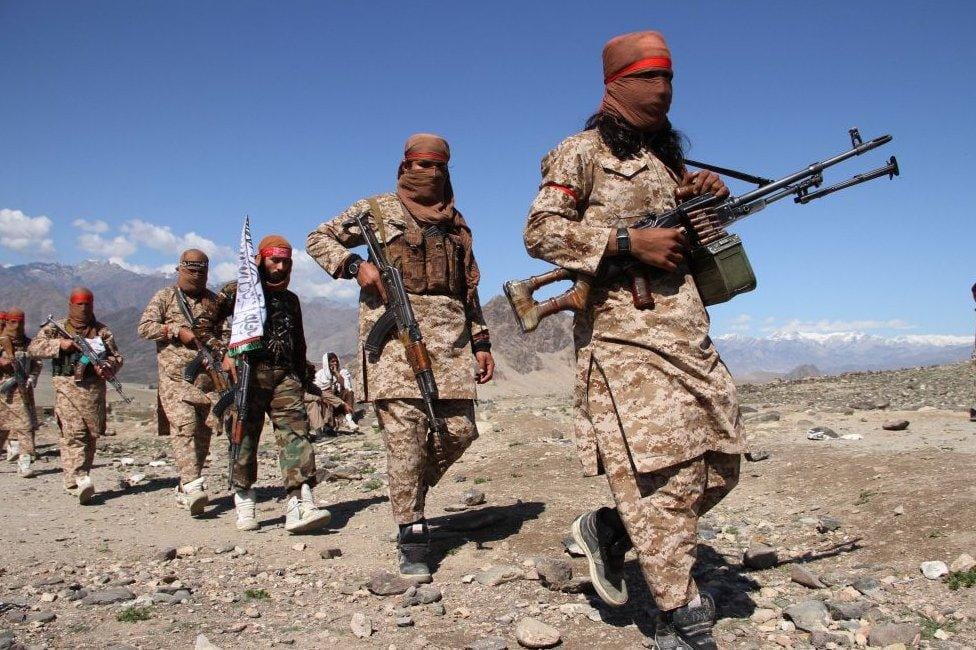
However, the Taliban-Pakistan relationship is not as stable as it appears—groups like the TTP (Tehrik-e-Taliban Pakistan) remain a threat to Pakistan, which is diminishing the impact of this so-called strategic advantage. On the other hand, China’s CPEC (China-Pakistan Economic Corridor) and projects like Gwadar Port are creating a new power-center in the region, which not only strengthens relations between Pakistan and China but also poses new challenges for India’s security strategy.
(Next post link): China’s South Asia Policy through CPEC and Gwadar Port
India’s strategy
India has always adopted a policy of stabilizing Afghanistan through development rather than military means. Delhi completed numerous projects in Afghanistan, such as roads, schools, hospitals, and the Parliament building—which deeply established India’s soft power there. Simultaneously, India has further strengthened its intelligence and security system—especially through the coordination of agencies like RAW and NIA. India secured access to Afghanistan via Iran’s Chabahar Port, enabling it to maintain commercial and strategic links while bypassing Pakistan.
Long-Term Vision
India’s policy is not just limited to security, but is focused on maintaining regional stability and balance. For this, India adopts multilayered diplomacy—on one hand, development cooperation in Afghanistan and Central Asia, and on the other, diplomatic pressure on Pakistan’s terrorist networks. India is increasing partnerships on counter-terrorism and energy security with allies like the US, Russia, and the Gulf countries. This strategy is not merely a military or intelligence response, but a step towards building a comprehensive security framework at the political, economic, and diplomatic levels.
Central to South Asian politics: security and balance of power
The final and most complex aspect of India’s South Asian strategy is maintaining the regional power balance. Amidst the security challenges emerging through the Taliban and Pakistan, India must also balance the growing presence of a third major power: China.
The geopolitical balance of power in China’s influence
China’s role
China’s ‘String of Pearls’ strategy is now visible in both Afghanistan and Pakistan. With China’s friendship with Pakistan, known as the ‘all-weather friendship,’ has transformed into a deep economic and strategic alliance. The China-Pakistan Economic Corridor (CPEC) and China’s control over Gwadar Port are subjects of strategic concern for India.
Similarly, China’s economic penetration is growing in Taliban-controlled Afghanistan, as Beijing is keen to invest in its mineral resources. This increasing Chinese presence challenges India’s traditional influence in South Asia.
Concern for India
The biggest concern for India is the potential formation of a China-Pakistan-Taliban triad. If these three centers of power engage in strategic cooperation at any level, it could present India with a simultaneous two-front challenge on its western and northern borders. A combination of China’s economic power, Pakistan’s regional infiltration, and the Taliban’s ground control could seriously endanger India’s regional stability.
(Next post link): To understand China’s growing territorial ambitions in detail, read our next post: “India’s Foreign Policy and China” (Link to next blog here).
India’s long-term security vision
To address these complex challenges, India is pursuing a multi-dimensional and long-term security approach, based not just on military power but also on diplomacy and economic engagement.
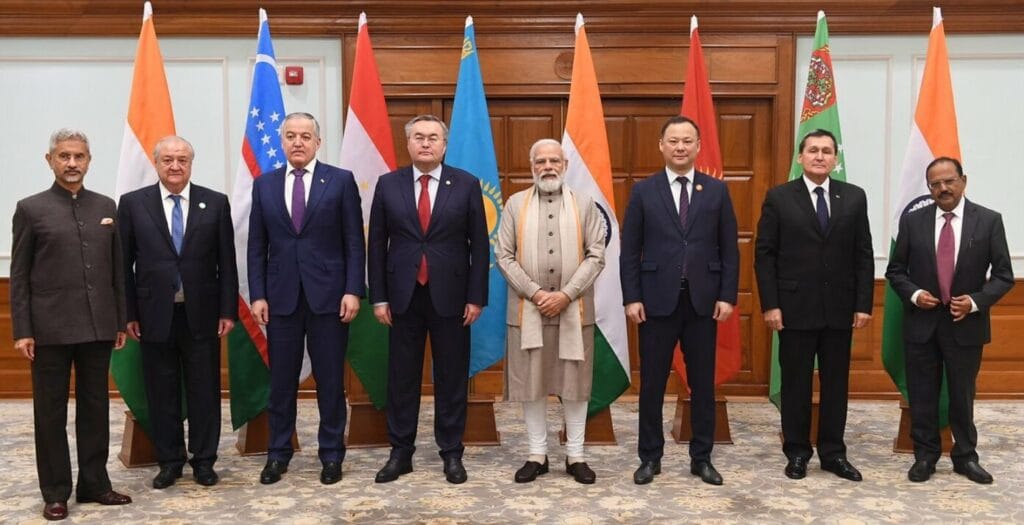
Multi-layered Diplomacy
A critical part of India’s strategy is to ensure that regional stability does not rely solely on the Taliban or Pakistan. New Delhi is strengthening alliances with key global and Central Asian players such as Iran, Russia, the Central Asian Republics (CARs), the US, and the Gulf countries. These Central Asian nations, in particular, are viable partners in the economic and security sectors, sharing India’s concerns about radicalism and terrorism.
This multi-dimensional diplomacy helps India garner international consensus and support on the issues of Afghanistan and Pakistan, ensuring that no single power establishes a monopoly in the region.
‘Neighborhood First’ policy
Through its ‘Neighbourhood First’ policy, India is emphasizing the re-establishment of its traditional influence in South Asia. By enhancing connectivity (such as the Chabahar Port and other regional initiatives) and economic cooperation, India aims to ensure that regional countries rely more on India than on China for their security and development. This soft power approach establishes India as a stable and credible regional leader.
Intelligence Network
Alongside diplomacy and cooperation, intelligence and surveillance form the cornerstone of India’s strategy. Strengthening the intelligence network is paramount to countering all types of security threats (terrorist activities and arms trafficking) emerging from the Afghanistan-Pakistan region. Effective intelligence information will enable India to take quick and precise steps to deal with any potential two-front challenge or cross-border threat.
Conclusion
India’s foreign policy in South Asia is passing through an uncertain and challenging phase. India’s dual strategy of ‘pragmatic engagement’ with the Taliban and ‘security-based distance’ from Pakistan indicates that New Delhi has adopted a realistic approach. Continuing development and humanitarian aid in Afghanistan keeps India relevant in a region where China is expanding its influence with its economic power, while isolating Pakistan on international forums remains an integral part of India’s security strategy.
China’s increasing interference in regional equations is the greatest long-term challenge for India. To break the potential China-Pakistan-Taliban nexus and maintain the balance of power in South Asia, India must not only enhance its military and intelligence capabilities but also vigorously implement its multilayered diplomacy and the ‘Neighbourhood First’ policy.
The conclusion is that this subject is extremely important for India’s security and regional stability. India’s strategy to control the influence of the Taliban and Pakistan will ensure that India, as a rising global power, successfully safeguards its national interests.


